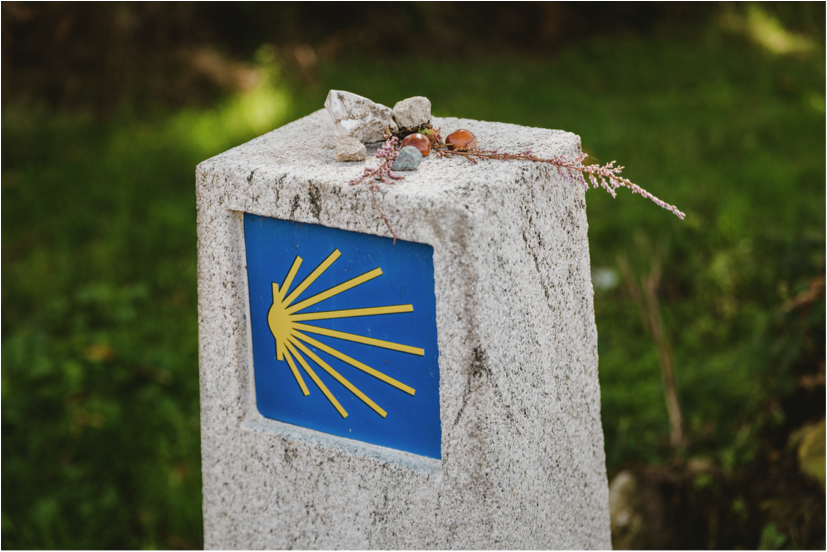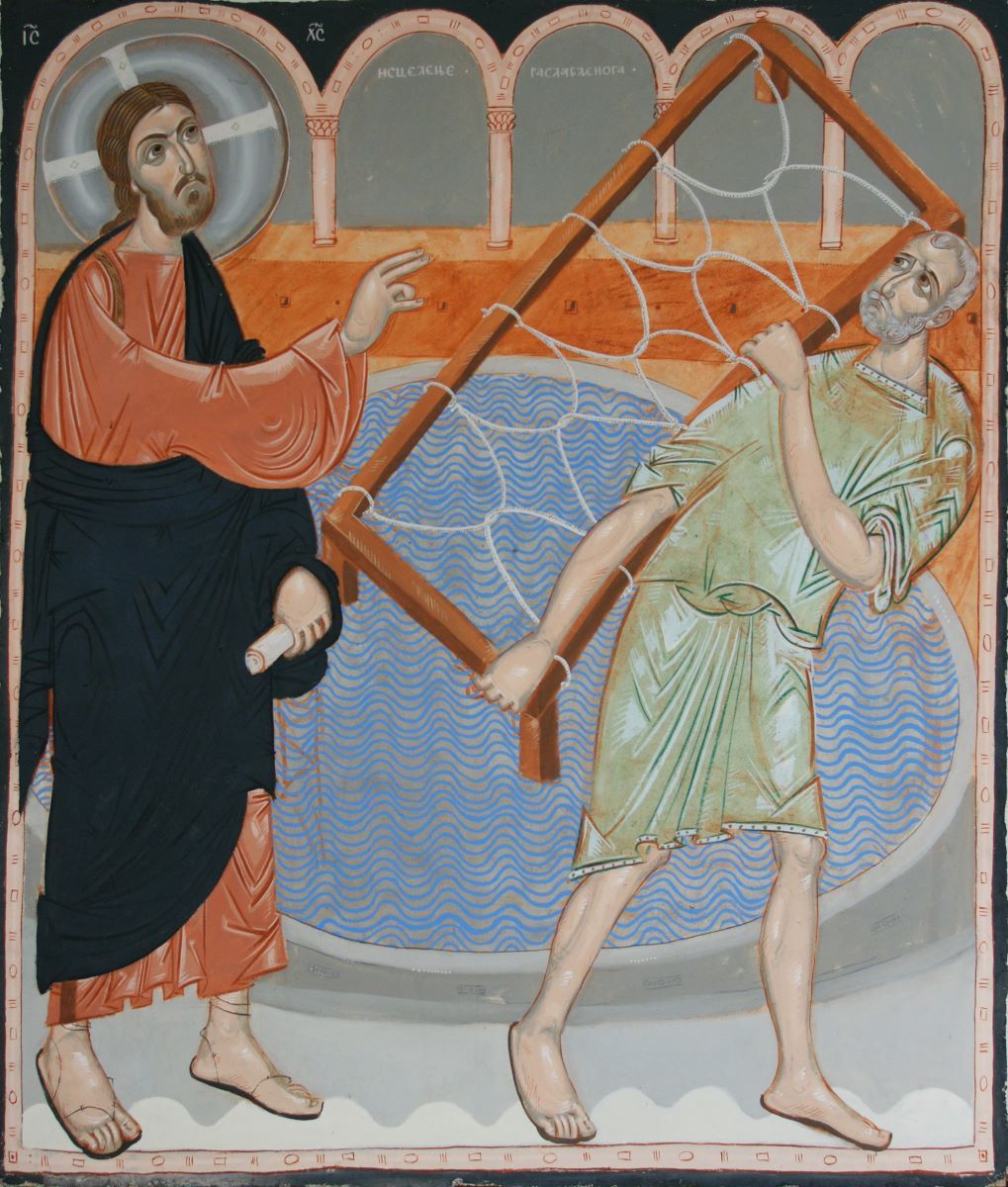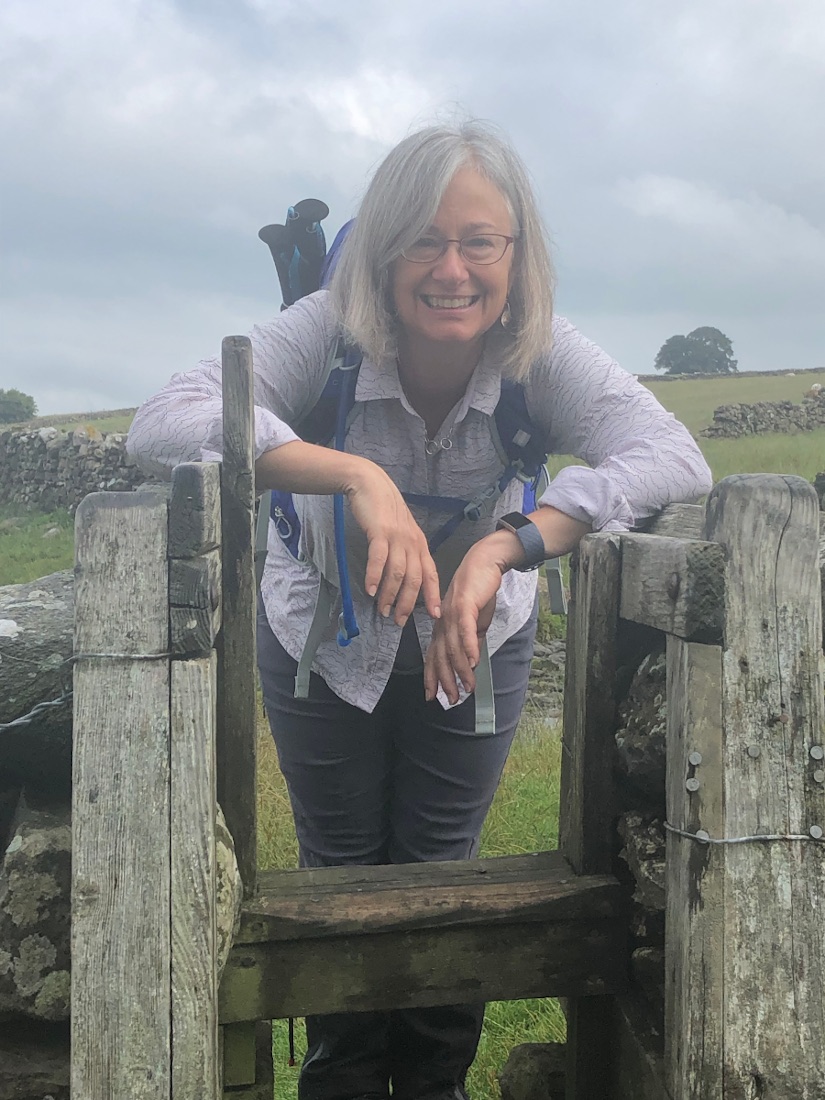
Homily on the Sunday of the Paralytic
Glory to the Father, Son, and Holy Spirit—one God. Amen.
This month, as part of Antiochian Women’s Month, we are exploring the words of the Word of God. Last week, Kyra spoke eloquently about how the words of the Word of God teaches and fosters resiliency. In today’s Gospel reading, the words of the Word of God—our Lord, Jesus Christ, forgive as revealed through the encounter with the paralyzed man—A man carried by friends and family to Jesus to receive healing. And what we learn from today’s Gospel is the paralytic, like all of us, has to prepare himself for forgiveness, invite a community of folks to help him get there (both physically and metaphorically) and then he has to decide what to do afterwards, after being healed by Christ. No longer trapped in a situation where he is at the mercy of others to get around, the paralytic can now exercise his own will. He could have gone anywhere, and interestedly, he chooses to return home.
This is a story of pilgrimage, which resonates deeply with me: a journey, usually a long one, made to a sacred place as an act of religious devotion. A journey that breaks you down, allows you to examine your life, sit with your sins, find forgiveness and then re-assemble yourself as you decide how to come back home.
Three years ago, I felt called to become a pilgrim, to engage in this process of deep reflection, healing and forgiveness. After many unexpected upheavals in my life and a crisis of faith, I walked the Camino de Santiago: the ancient Christian path of St. James the Apostle. This 500-mile walk begins in the foothills of the Pyrenees, goes across Spain and ends at the Santiago de Compostela Cathedral.
The Camino takes about 35 days, if you average about 15-22 miles a day with a weekly rest day. The Camino wanders through small villages, cities, forests, wheat fields and parks. It’s just you and all that you need… on your back.
Even though over 300,000 people, all with different callings and reasons, walk the Camino every year, all of us share a common purpose: to encounter the Divine, break ourselves down into our essential parts, unplug from everyday life, reflect upon our past, live in the present and reset towards the future.
To deepen the transformation, pilgrims carry a stone from home to leave at Cruz de Ferro: The Iron Cross. The stone symbolizes a burden or wish that they are carrying. For some, the stone honors the death of a loved one; for others it represents the end of cancer treatment, or a divorce, or the beginning of a new career.
For me, it was to be with myself, my struggles, my pride and my longing to live a life with God at its center. It was about asking for forgiveness and forgiving myself.
Walking the Camino is hard! Early on, you don’t think your body will recover, your feet grow about a size, the sun bakes and your head aches. I arrived in St. Jean tired, anxious and wondering what the heck we were doing. I was in a bunk bed in a room of 12 pilgrims, close to a snoring German. I was anxious to begin heading up into Pyrenees in the morning, and I hardly slept all night.
Long before dawn, the staff woke us up. We packed our bags in the dark. I crested the mountains, wearing every piece of clothing I had, to defend against the cold and intense fog that was so thick, I literally walked into a pack of wild horses.
How far did the paralyzed man have to travel to see Jesus? What did he have to shed and discover? Many of the days we walked in silence. With no distractions, by the second week, I thought I would go crazy if I kept embracing my old narratives. Fortunately, around every corner there was a church, a nun, a bird, a flower, or an innkeeper who helped me on the Way.
I began to understand that my thoughts weren’t who I was.
Eventually, I entered the 100 miles of the Masada, a place feared by many, five full days of one golden field of wheat after another. This is the place where some people physically and emotionally break down.
I remember the Masada bursting with color, which I can only attribute to the clearing that occurs when you walk nearly 20 miles a day! I was in the present moment, and that blue expansive sky was me: my true self.
The Camino is a community-supported journey. When you can’t carry you pack anymore, someone steps up. When you want to give up, pilgrims rally by singing songs, sharing snacks and foot ointments. When the rain hits, people make room under the only tree in the distance.

The paralyzed man must have known something similar, broken, yet encountering love and support of a community. Without the use of his legs, he had no choice but to rely on friends and family to carry him to Jesus. And, after what must have been a painful journey to find no way in, his community lowered him through the roof of the house, right down to Jesus. What a sight that must have been, what a leap of faith for this pilgrim!
It is now in the story that Jesus says the words, “Your sins are forgiven…”
Christ knew the man had prepared himself for forgiveness. And as the Cruz de Ferro loomed into view, I trembled. Was I ready to be forgiven, to leave my burdens, my sorrows, my regrets and my sins at the foot of the cross? And, how would my life change? Did I even know how to live being forgiven? I knew the answers were before me so my pace began to quicken. I added my stone to the many hundreds of thousands of stones, many wet with tears. I looked up to the blue sky and knew my prayers had been received.
Just like the paralyzed man, we both leave having accomplished something big and hard. We were exhausted yet exhilarated as we left this sacred space and started our walk home.
With forgiveness comes a feeling of wholeness, as I am sure the paralyzed man must have experienced quite profoundly when his two legs started to move. Through forgiveness, we feel whole, integrated. And with this comes a strength that together we can do great things.
“Everything is solved by walking,” wisely noted by St. Augustine because through the process of walking, one can find the quiet space to look without judgment about what is in front of you. Most importantly, forgiveness by the way of a pilgrimage allows you to return home, home to God and your true self.
And even though my Camino family is back in their countries, I can re-connect to this wholeness by just going for a walk. I walk every day and I consider myself a pilgrim, someone who walks to clear my mind of “earthly cares”, to remember the healing warmth and energy that comes from forgiveness and to find Christ in myself and within others.
(The icon is by Todor Mitrovic.)
Jennifer Nahas is on leave as vice president of Axia Women.



